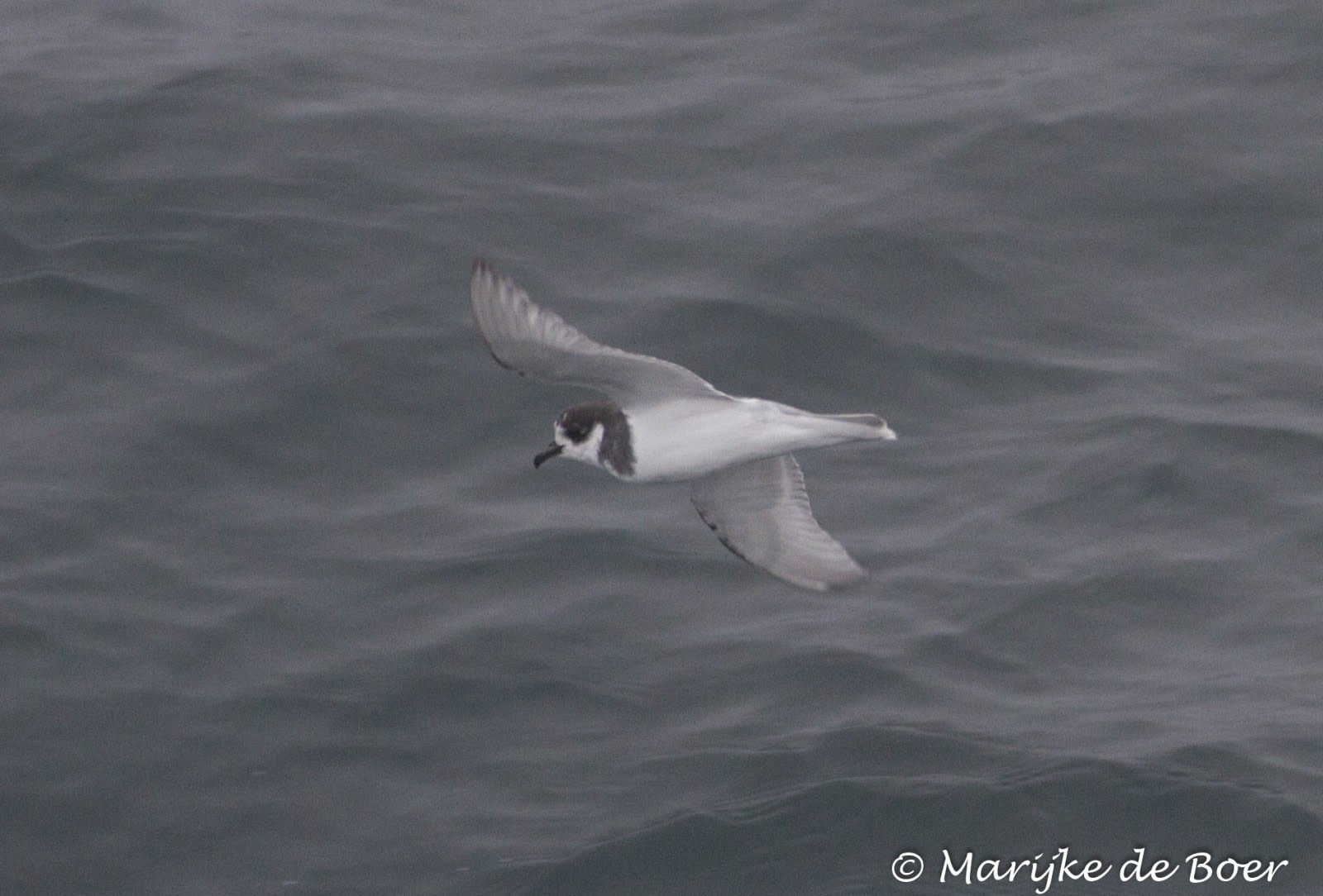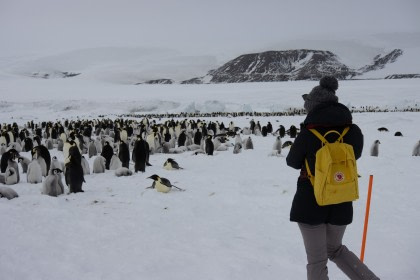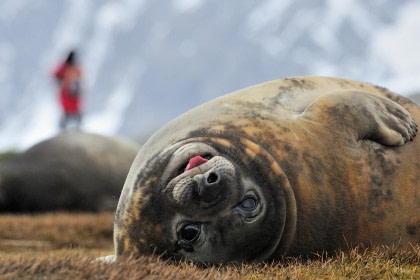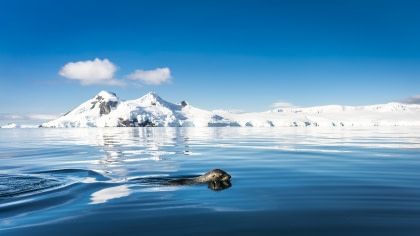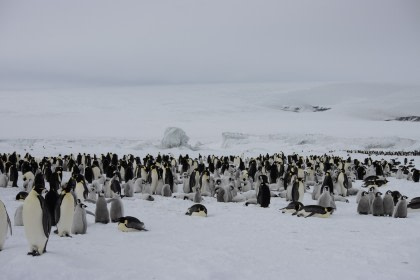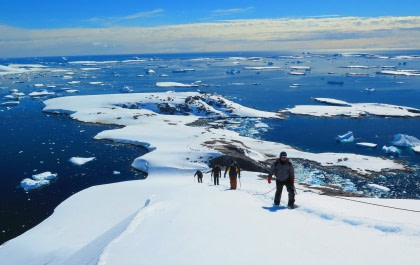Name: Blue Petrel (Halobaena caerulea)
Length: 30 cm.
Weight: 200 grams.
Location: Sub Antarctic.
Conservation status: Least Concern.
Diet: Crustaceans, squid, fish.
Appearance: White undersides and face, blue-grey topsides. Black mask around eyes. Black bill. White tip on tail. Darker M spreading across front of wings from wingtip to wingtip.
How do Blue Petrels feed?
Blue Petrels are divers, diving as deep as 6 metres. They also feed by dipping while swimming. They can sometimes be found tracking whale movements as the whales will drive prey fish towards the surface of the water, making it easier for the birds to catch them.
Are Blue Petrels social?
Blue Petrels form large colonies come the breeding season.
How fast do Blue Petrels fly?
Blue Petrels usually fly at a rate of around 11 metres per second.
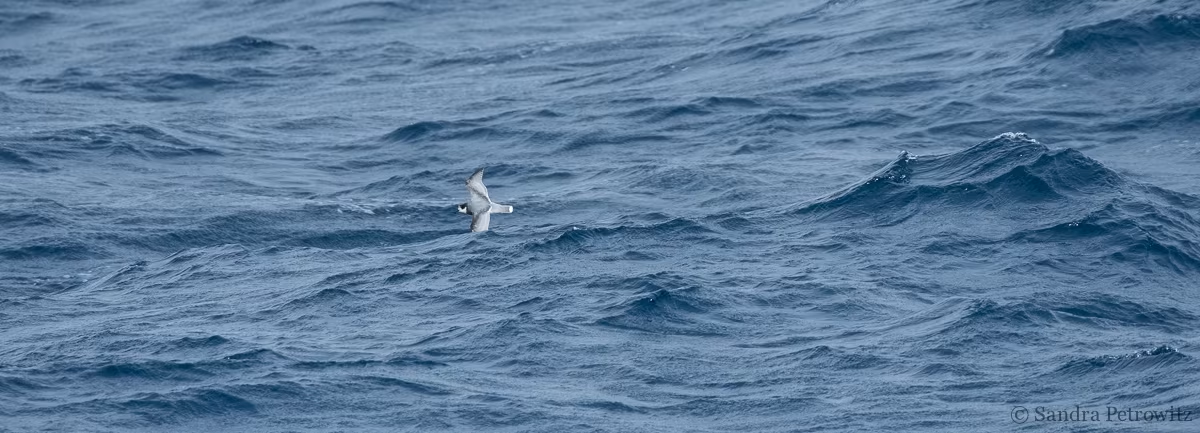
What are Blue Petrel birthing rituals like?
The Blue Petrel breeding season begins around the middle of September. They are monogamous. The nests are burrows dug into tussocks.
One egg is laid sometime in October. The parents take turns incubating the eggs for around 50 days. The hatchling will fledge after another 55 or so days.
How long do Blue Petrels live?
Blue Petrels live for about 20 years.
How many Blue Petrels are there today?
The worldwide Blue Petrel population stands at roughly 3,000,000 individuals.
Do Blue Petrels have any natural predators?
Blue Petrel eggs and young are targeted by Skuas. They can also be preyed upon by rats and cats depending on their breeding location.
7 Bountiful Blue Petrel Facts
- Blue Petrels are the only species within the genus of Halobaena.
- Blue Petrels are one example of bird that produces a foul-smelling stomach oil that is stored in a special section of the stomach called the proventriculus. This oil is used to feed themselves while on long flights, feed their young, or it can be sprayed at predators.
- Also like some other birds Blue Petrels have a gland that is used to secrete a saline solution in order to compensate for all the salt ingested due to their feeding in ocean waters.
- “Petrel” refers to Saint Peter and the Biblical story of his walking on water. In order to take off Petrels require a long “runway” across the ocean’s surface. As they get up to speed they appear to run on the water.
- Blue Petrels are pelagic (they live at sea) and only come ashore during their breeding season.
- Blue Petrel flocks are often intermixed with other species like Thin-billed Prions, Antarctic Prions, and Salvin’s Prions.
- Blue Petrels are mainly nocturnal during the breeding season.
